Optimizing the mechanical supply chain in today’s fast-paced manufacturing landscape is more critical than ever. Businesses face increasing pressure to reduce costs, minimize production delays, and maintain high product quality. Manufacturers must adopt efficient production methods that enhance speed, precision, and reliability to stay competitive. One of the most effective ways to streamline the mechanical Read more
Whats New
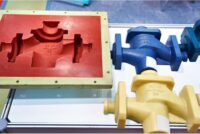
Optimizing the mechanical supply chain in today’s fast-paced manufacturing landscape is more critical than ever. Businesses face increasing pressure to reduce costs, minimize production delays, and maintain high product quality. Manufacturers must adopt efficient production methods that enhance speed, precision, and reliability to stay competitive.
One of the most effective ways to streamline the mechanical supply chain is through injection molding. This manufacturing process enables companies to produce high-quality parts at scale while maintaining cost efficiency. With its rapid production capabilities and material versatility, injection molding has become an essential tool for companies looking to improve supply chain efficiency and meet growing market demands.
By leveraging advanced manufacturing solutions with RapidDirect, businesses can accelerate production cycles, minimize material waste, and enhance product consistency. These benefits make injection molding an indispensable part of modern supply chain optimization, ensuring seamless operations from prototyping to full-scale production.
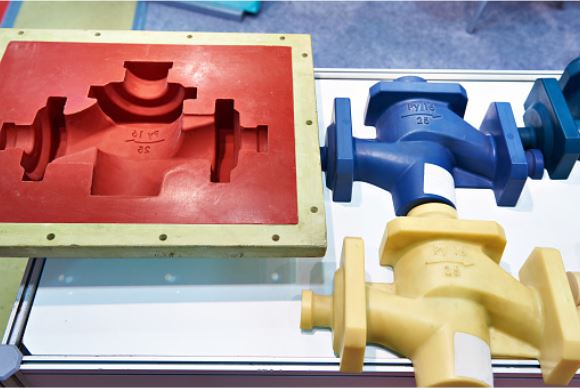
Understanding Injection Molding in Supply Chain Management
What Is Injection Molding?
Injection molding is a manufacturing process that involves injecting molten material—typically plastic, metal, or rubber—into a pre-designed mold to create precise and repeatable parts. This technique is widely used in industries such as automotive, aerospace, consumer goods, and medical devices due to its ability to produce large volumes of high-quality components with minimal waste.
The process follows a simple yet highly efficient cycle:
- Clamping – The mold is securely closed to prepare for material injection.
- Injection – Molten material is injected into the mold cavity at high pressure.
- Cooling – The material solidifies and takes the shape of the mold.
- Ejection – The finished part is removed, and the cycle repeats.
This automated process allows for fast, consistent, and scalable production, making it a key driver of supply chain efficiency.
Why Injection Molding Enhances Supply Chain Efficiency
Injection molding offers several advantages that directly contribute to a more efficient mechanical supply chain. Some of the primary benefits include:
- High production speed – The automated nature of injection molding significantly reduces manufacturing time compared to traditional methods like CNC machining or 3D printing.
- Cost-effective mass production – Once the mold is created, the per-unit cost of production decreases significantly, making large-scale manufacturing highly economical.
- Material versatility – A wide range of thermoplastics, elastomers, and composites can be used, providing flexibility for different applications.
- Minimal waste – Unlike subtractive manufacturing processes, injection molding generates very little material waste, improving sustainability and cost-efficiency.
- Consistency and repeatability – The process ensures that every part is nearly identical, reducing defects and quality control issues.
By integrating injection molding into their supply chain, manufacturers can achieve faster production cycles, lower costs, and greater reliability, ultimately improving their overall operational efficiency.
Key Ways Injection Molding Optimizes the Mechanical Supply Chain
1. Faster Production and Reduced Lead Times
Time is a crucial factor in supply chain management. Delays in manufacturing can lead to production bottlenecks, missed deadlines, and increased costs. Injection molding offers a high-speed production process that minimizes lead times, ensuring that products are manufactured and delivered on schedule.
Since injection molding is an automated and continuous process, it allows manufacturers to produce thousands—even millions—of parts with minimal human intervention. This significantly reduces the time spent on manual assembly and inspection, enabling companies to meet tight deadlines and keep up with demand fluctuations.
Furthermore, digital manufacturing advancements, such as rapid tooling and AI-driven process optimization, further accelerate production cycles. By leveraging these technologies, businesses can increase efficiency and maintain a smooth supply chain workflow.
2. Cost Savings Through Mass Production
One of the biggest advantages of injection molding is its ability to significantly reduce production costs—especially for high-volume manufacturing. Once the initial mold is created, the cost per unit drops drastically, making it one of the most cost-effective manufacturing methods available.
Here’s how injection molding drives cost savings:
- Lower labor costs – Since the process is automated, minimal manual labor is required.
- Economical material usage – Injection molding minimizes waste, reducing material expenses.
- Efficient production cycles – The ability to produce thousands of identical parts quickly leads to better economies of scale.
Compared to other manufacturing methods like CNC machining, where each part is individually cut from a solid block, injection molding produces complex geometries with minimal waste. This efficiency translates to lower costs and higher profitability for manufacturers.
3. Consistency and Quality Control
Inconsistent product quality can lead to costly rework, delays, and customer dissatisfaction. Injection molding ensures high precision and repeatability, making it an ideal solution for industries that require strict quality standards.
Key factors that contribute to superior quality control in injection molding include:
- Precision molds – Advanced mold design and tooling ensure that each part meets exact specifications.
- Automated quality checks – AI and machine vision systems can detect defects in real time, reducing errors.
- Consistent material properties – The controlled injection process ensures uniformity in texture, strength, and performance.
By maintaining tight tolerances and strict quality control, injection molding helps manufacturers eliminate defects, reduce waste, and enhance product reliability, leading to a more efficient and streamlined supply chain.
4. Enhancing Supply Chain Flexibility with Injection Molding
Rapid Prototyping and Design Iterations
Modern injection molding techniques, such as soft tooling and 3D-printed molds, allow manufacturers to develop and test multiple iterations of a product before committing to mass production. This reduces the risk of design flaws and ensures that the final product meets both performance and cost expectations.
Scalability for Variable Demand
Market demand can fluctuate due to seasonal trends, economic shifts, or unexpected global events. Injection molding provides a scalable solution that enables manufacturers to ramp production up or down as needed without excessive lead times or resource wastage.
5. Sustainable Manufacturing with Injection Molding
Material Efficiency and Waste Reduction
Injection molding minimizes waste by allowing excess material to be reprocessed and reused, reducing raw material consumption and supporting eco-friendly manufacturing practices.
Energy-Efficient Production
Modern injection molding machines consume less power, particularly with electric and hybrid systems, making them more sustainable and cost-effective in the long run.
6. Overcoming Supply Chain Challenges with Injection Molding
Mold Development Costs and Lead Times
To mitigate high mold costs, businesses can use rapid tooling and modular mold designs to reduce expenses and improve production agility.
Supply Chain Disruptions and Material Shortages
Diversifying suppliers and considering alternative materials can help manufacturers maintain stable production despite fluctuations in material availability.
Quality Control and Process Optimization
Automated inspection systems and AI-driven monitoring help maintain consistent product quality, preventing costly defects and production delays.
Conclusion
Injection molding is a powerful manufacturing method that significantly improves the efficiency, flexibility, and sustainability of the mechanical supply chain. By leveraging its ability to reduce lead times, lower costs, and ensure consistent product quality, manufacturers can streamline their operations and stay competitive in a rapidly evolving market.
As businesses continue to face supply chain challenges, adopting innovative injection molding solutions will be key to maintaining efficiency and profitability. Companies that integrate advanced technologies, sustainable practices, and strategic supplier partnerships will be well-positioned for long-term success.
By optimizing supply chain operations with injection molding, manufacturers can drive higher productivity, reduce waste, and meet growing market demands with precision and reliability.

The plumbing and HVAC industries are going through some big changes, thanks to new tech, environmental issues, and evolving consumer demands. New technologies and eco-friendly practices are shaking up how buildings are designed, kept up, and run. Not only does it make indoor spaces more efficient, but it also helps us move toward a greener Read more
The plumbing and HVAC industries are going through some big changes, thanks to new tech, environmental issues, and evolving consumer demands. New technologies and eco-friendly practices are shaking up how buildings are designed, kept up, and run. Not only does it make indoor spaces more efficient, but it also helps us move toward a greener future. Here are some powerful trends currently prevailing in the HVAC industry.
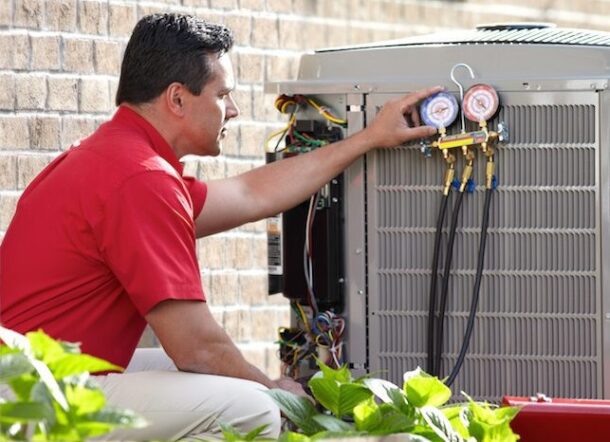
Energy Efficiency and Sustainability
Energy efficiency and sustainability are now the most dominant topics in the plumbing and HVAC industries. That’s why the HVAC industry has already started moving towards sustainable methods like heat pumps and geothermal applications, which are essential in minimizing carbon emissions and achieving decarbonization targets.
Mechanical contractors are incredibly important in this whole transition process. To get a better idea about their contribution, you need to know the answer to, “what is a mechanical contractor?” A mechanical contractor focuses on the installation, design, and maintenance of mechanical systems, such as HVAC, refrigerator, piping, and plumbing. They’re different from general contractors in that they work on specific systems in projects and ensure everything is running smoothly and efficiently.
Similarly, green products have made their way into the plumbing sector through options, such as green plumbing systems and low-flow fixtures. They not only save water, but also help minimize the environmental impact of plumbing systems. Mechanical contractors engaged in plumbing services always keep themselves updated about these green practices in order to satisfy the needs of customers and adhere to future regulations.
Smart and Connected Systems
Another powerful trend is the integration of smart technologies in HVAC and plumbing systems. For instance, smart HVAC systems incorporate advanced controls that optimize user comfort and lower energy use. The systems can be connected to home automation platforms and remotely monitored and controlled.
In plumbing, smart leak detection devices are now a regular feature, facilitating early detection of leaks in water systems to reduce wastage. Similarly, the availability of smart diagnostic tools in HVAC has made things easier. These tools help with preventive maintenance by making it easier to detect potential problems when they’re still nascent, cutting system downtime and enhancing efficiency.
Regulatory Changes and Technological Innovations
Regulatory changes are flipping the plumbing and HVAC industries upside down. In HVAC, we’re seeing a huge shift with the phasedown of high-GWP refrigerants. Due to this, HVAC technicians, like mechanical contractors, need to switch over to low-GWP refrigerants and learn new skills in order to deal with all the new equipment and technology.
In plumbing, new regulations are in place to save water, encouraging everyone involved to resort to sustainable technologies like greywater recycling and rainwater harvesting. Contractors who go the extra mile to keep themselves updated about new trends will manage to beat the competition.
Endnote
The future of the plumbing and HVAC industry is defined by technological innovation, environmental issues, and regulatory reform. Mechanical contractors, with their professional knowledge, are at the forefront of these developments. As the plumbing and HVAC industry continues to develop, it’s critical that pros embrace new technologies and sustainable practices. By doing so, they can help make buildings safe, efficient, and comfortable for occupants and help create a greener future for the plumbing and HVAC sector.

Creating a bathroom that blends vintage charm with modern convenience isn’t just about design—it’s about crafting a space that tells your story through carefully chosen elements. According to the National Association of REALTORS®’ 2022 Remodeling Impact Report, bathroom renovations recover approximately 71% of their project costs upon resale, making this approach both aesthetically pleasing and Read more
Creating a bathroom that blends vintage charm with modern convenience isn’t just about design—it’s about crafting a space that tells your story through carefully chosen elements. According to the National Association of REALTORS®’ 2022 Remodeling Impact Report, bathroom renovations recover approximately 71% of their project costs upon resale, making this approach both aesthetically pleasing and financially sound. The art of mixing old and new in bathroom design brings character while ensuring functionality remains at the forefront.
In this article, discover how to balance traditional fixtures with contemporary amenities, creating a space that honors the past while embracing modern comfort. Learn to combine materials, select fixtures, and create a cohesive design that stands the test of time.
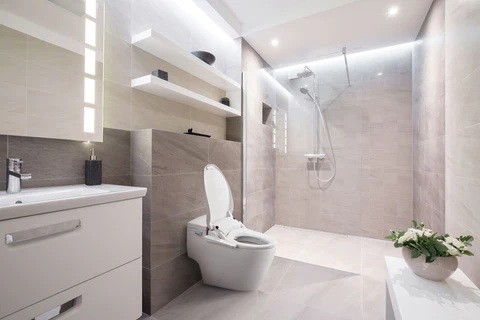
Blending Classic and Contemporary Elements
Core Principles
The secret to successful style mixing lies in balance. A study published in the Journal of Civil Engineering and Environmental Sciences reveals that preserving historical value and maintaining an emotional connection to the space significantly enhance homeowner satisfaction.
Start with a clear vision of which traditional elements you want to preserve or incorporate. Many experienced bathroom remodel service providers like with BossDesignCenter.com recommend beginning with a focal piece that sets the tone—perhaps a clawfoot tub or vintage tiles that establish the foundation for your design.
Modern elements should complement, not compete with, these classic pieces. Think sleek vanities paired with ornate mirrors or contemporary lighting fixtures alongside traditional moldings. The key is creating dialogue between different eras without letting either dominate.
Consider scale and proportion when selecting pieces. A large vintage mirror can anchor a space, while modern sconces provide functional lighting without overwhelming the classic elements. This approach ensures neither style feels out of place.
Materials and Textures
Mixing materials thoughtfully creates depth and interest. Marble, a timeless choice, pairs beautifully with modern matte black fixtures. Traditional subway tiles take on new life when arranged in contemporary patterns.
Natural wood elements, whether in vintage cabinets or modern floating shelves, add warmth to the space. Metal finishes can bridge the gap—brass or copper fixtures complement both old and new styles while adding visual interest.
Textural contrasts play a crucial role. Smooth, modern surfaces can offset the intricate details of vintage pieces. Consider how rough stone or textured wallpaper might interact with sleek, contemporary fixtures.
Key Design Elements
Fixtures and Hardware
Selecting fixtures requires careful consideration. Traditional elements like clawfoot tubs or pedestal sinks can serve as focal points. Modern faucets in classic finishes offer functionality while respecting the overall aesthetic.
Hardware choices present opportunities to unite different styles. Contemporary handles in traditional materials like brass or bronze can tie the design together. Consider mixing finishes thoughtfully—chrome, nickel, and brass can coexist when distributed purposefully throughout the space.
Lighting Solutions
Lighting design offers another avenue for style fusion. Victorian-inspired chandeliers can complement modern recessed lighting. Wall sconces might feature traditional shapes with contemporary finishes.
Layer your lighting to serve both form and function. Task lighting around mirrors can be sleek and modern, while ambient lighting might lean toward classic designs. This approach ensures the space is both beautiful and practical.
Storage and Organization
Modern storage solutions can hide behind traditional facades. Consider vintage-style cabinets with modern organizational systems inside. Floating shelves offer contemporary convenience while displaying antique accessories.
Built-in storage can incorporate both old and new elements. Traditional wainscoting might conceal modern pull-out drawers, while contemporary niches can showcase vintage accessories.

Practical Implementation Tips
Creating Balance
Start with a dominant style and accent with contrasting elements. If your space features primarily traditional elements, incorporate modern touches through lighting or hardware. Conversely, a modern foundation can be warmed up with vintage accessories and fixtures.
Color plays a crucial role in unifying different styles. A consistent color palette helps diverse elements feel cohesive. Consider using neutral tones as a base, allowing both traditional and modern pieces to shine.
Avoiding Common Mistakes
Resist the urge to include too many statement pieces. Let certain elements take center stage while others play supporting roles. This prevents the space from feeling chaotic or disconnected.
Ensure functionality isn’t sacrificed for style. Modern amenities like efficient storage and proper lighting should integrate seamlessly with vintage elements. Remember that a beautiful bathroom must still serve its primary purpose effectively.
Conclusion
Mixing old and new styles in bathroom design offers endless possibilities for creating unique, personalized spaces. Success lies in the thoughtful selection and placement of elements, ensuring both aesthetic appeal and practical functionality.
By following these guidelines while staying true to your vision, you can create a bathroom that honors traditional charm while embracing modern convenience. The result is a timeless space that feels both fresh and familiar, ready to serve you well for years to come.
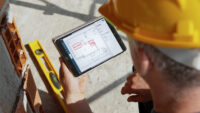
As the owner of a construction company, you are accustomed to using advanced tech. This can range from vehicles and machinery to CAD design software and modern surveying tools. However, it’s equally important to support yourself with the right products to manage day-to-day operations. The right systems will save you time, money, and your sanity Read more
As the owner of a construction company, you are accustomed to using advanced tech. This can range from vehicles and machinery to CAD design software and modern surveying tools. However, it’s equally important to support yourself with the right products to manage day-to-day operations.
The right systems will save you time, money, and your sanity. Moreover, they’ll help optimize your productivity and profitability for long-term success. Here’s where modern tech will make all the difference.
Staff Management
Employees are the greatest asset at any company’s disposal. However, managing people is particularly important in the world of construction. From on-site workers to office staff, it’s vital that you invest in talent acquisition. Moreover, you must support yourself with a sizable team of agency workers and freelance contractors who can fill in when needed. A lack of people on site would seriously harm productivity, stopping you from meeting the time and budget needs.
Technology certainly helps in recruitment, especially with the use of tools like AI. However, it’s equally crucial for managing employees. Timesheet software, automated payroll, and mass team messaging packages are just some of the best tools to consider.
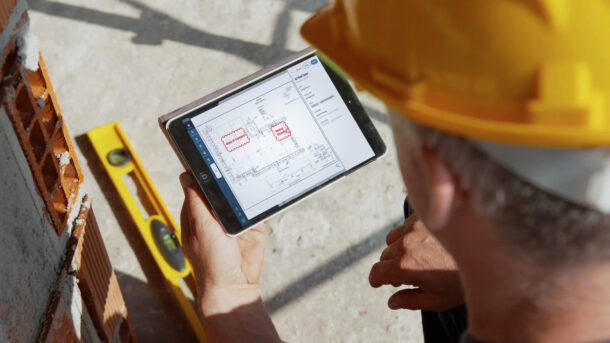
Account Management
The success of your construction firm relies heavily on a wide range of contributing factors. In reality, though, nothing else matters if you’re not getting paid. Given the big sums involved in construction projects, many clients require repayment plans. Opting for dedicated invoice payment solutions will help keep things under control. They also maintain professionalism, encourage speedy payments, and make a record in case you ever need to take action.
Managing accounts isn’t only about getting paid, though. A customer relationship management package with integrated client support can be equally effective. If you can keep clients happier, the entire business model will operate more smoothly.
Predictive Analytics
Time is money, and you already use machinery and heavy equipment to support efficient workflows. However, you must not ignore the need to keep those facilities in great health in the name of productivity. Unscheduled downtime can quickly cause projects to fall behind the planned completion date. Predictive analytics software can monitor all equipment and machinery. This will then alert you if performance levels start to fall.
Once this happens, repairs can be scheduled with ease. Predictive analytics also help with pricing, testing out ideas via virtualization, and performance. If nothing else, this allows project managers and contractors to work with 100% confidence.
Research & Marketing
Market research is essential for construction companies. From finding your place in the market to understanding legal changes or evolving material costs, its value is huge. Moreover, you can use automated tools to secure the best prices on supplies or issues like insurance for contractors. In turn, capital can work harder as a result of data-driven decisions. Better still, the tech features provide a significant boost from a time-efficiency perspective.
Finally, marketing plays a key role in allowing you to win more projects. From PPC and SEO to GenAI content, there is a long list of tools that can aid your marketing efforts. If nothing else, it’ll enable you to dedicate more time to the projects themselves.
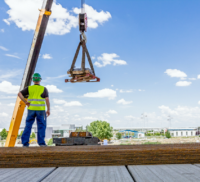
Every lift on a job site carries risk – and in mechanical construction, there’s no room for error. Straining under heavy loads, using the wrong equipment or ignoring best practices can lead to injuries, damaged materials and costly delays. Even a simple mistake can put a worker out of commission or bring an entire project Read more
Every lift on a job site carries risk – and in mechanical construction, there’s no room for error. Straining under heavy loads, using the wrong equipment or ignoring best practices can lead to injuries, damaged materials and costly delays. Even a simple mistake can put a worker out of commission or bring an entire project to a halt.
Knowing the biggest lifting hazards – and how to avoid them – is the key to keeping work moving forward without a hitch. Here, we’ll go over common lifting hazards and how to lift smarter to keep crews safe and projects on track.
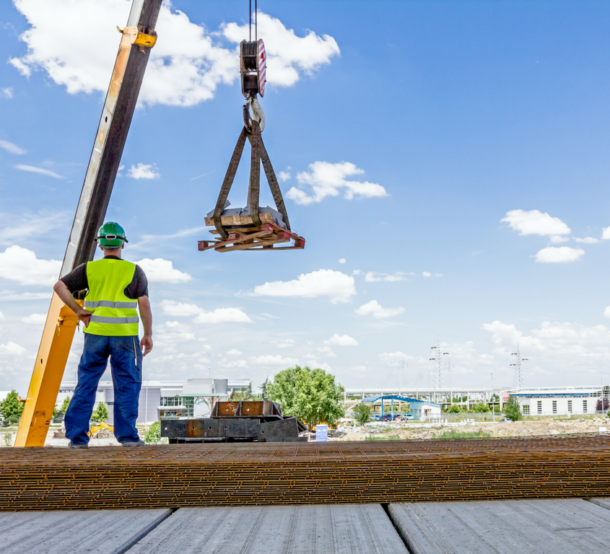
Improper Lifting Techniques
One of the biggest causes of lifting-related injuries in mechanical construction is poor lifting technique. Many workers rely on brute strength rather than using proper body mechanics, leading to excessive strain on the lower back, shoulders and knees. Repeated bending, twisting and lifting with the back instead of the legs can result in long-term injuries that take workers off the job.
How to Avoid It:
- Train workers on ergonomic lifting techniques, including bending at the knees and keeping the load close to the body.
- Encourage team lifting when handling heavy or awkward materials.
- Provide lifting aids like hoists, pulleys or carts to reduce manual strain.
- Rotate tasks to minimize repetitive lifting and allow for muscle recovery.
Inadequate Lifting Equipment
Using the wrong tools – or worse, not using any lifting aids – puts workers at significant risk. Relying solely on manpower to lift pipes, HVAC components or heavy metal structures increases the chance of dropped loads, crushed hands and severe back injuries. Often, accidents occur when outdated or undersized equipment is used beyond its capacity.
How to Avoid It:
- Invest in high-end lifting equipment for industry to handle heavy loads safely.
- Inspect and maintain cranes, hoists, slings and rigging equipment regularly to keep them in working order.
- Match the lifting device to the weight and dimensions of the load to prevent failure.
- Train workers to recognize when mechanical lifting assistance is required rather than attempting a lift manually.
Unstable or Unsecured Loads
An improperly secured load can shift during lifting, causing equipment failure, dropped materials or catastrophic injuries. Pipes, ductwork and steel beams require careful securing to avoid movement mid-lift. A miscalculated center of gravity or unbalanced load can throw off the entire lifting operation.
How to Avoid It:
- Use proper rigging techniques, including slings, chains and straps rated for the load weight.
- Verify that the load is evenly distributed and balanced before beginning the lift.
- Secure loose materials to prevent shifting, and always double-check hook and sling placements.
- Communicate clearly with team members to coordinate lifts and avoid sudden movements that could destabilize the load.
Lack of Safety Training
Even the best equipment and lifting plans mean nothing if workers aren’t properly trained in safe lifting practices. Many injuries occur due to a lack of awareness or improper execution of lifting procedures. Without proper training, workers may rush a lift, ignore safety protocols or miscalculate the best way to handle a load.
How to Avoid It:
- Conduct regular safety training focused on lifting techniques, proper use of lifting equipment and recognizing potential hazards.
- Reinforce pre-lift planning to make sure all team members understand their roles.
- Implement a safety culture where workers feel comfortable reporting unsafe conditions.
- Provide refresher courses on lifting aids, PPE and site-specific hazards to keep best practices top of mind.
Building a Safer Job Site
Lifting hazards don’t have to be part of the job. With proper training, the right equipment and a safety-first mindset, mechanical construction crews can keep injuries low and productivity high. After all, when every lift is done safely and efficiently, the whole team benefits.
AUTHOR BIO: Julianne Jordan is Senior Marketing Specialist for Ashley Sling, a leader in the wire rope and rigging equipment industry. Jordan has nine years of marketing experience in various industries including hospitality and consumer goods, as well as rigging.
